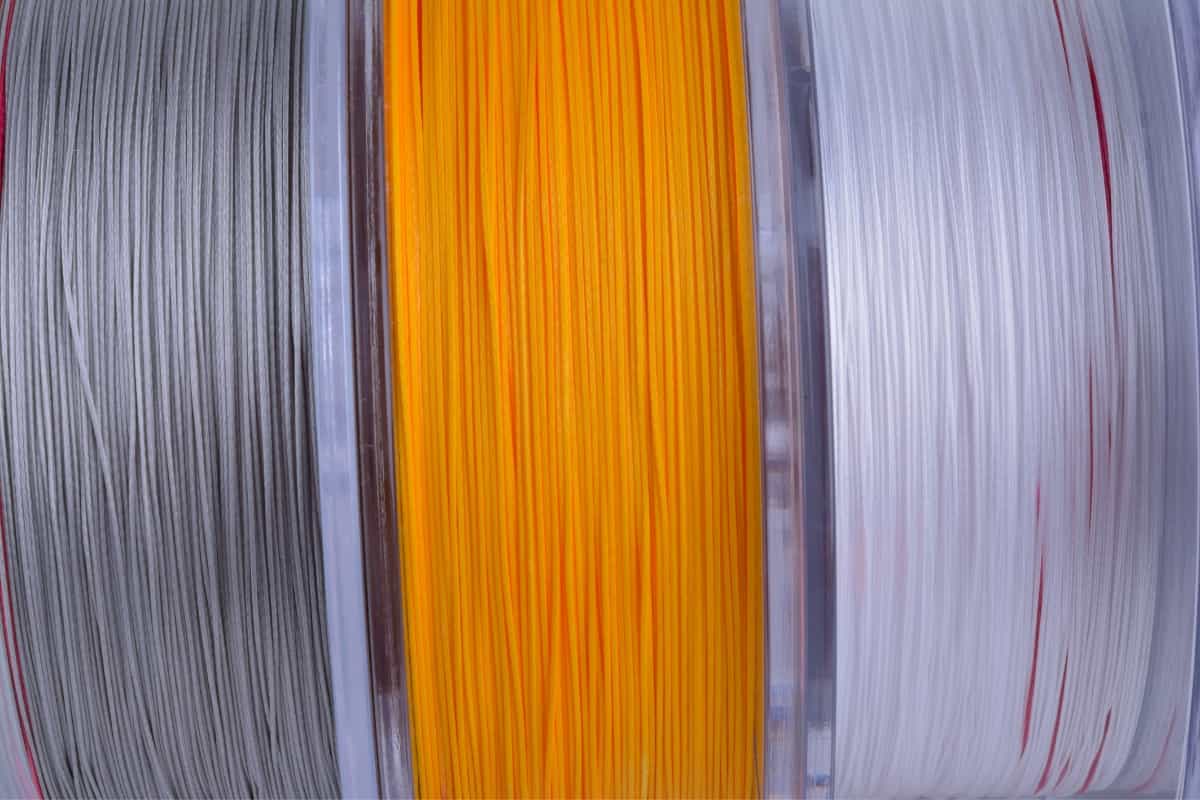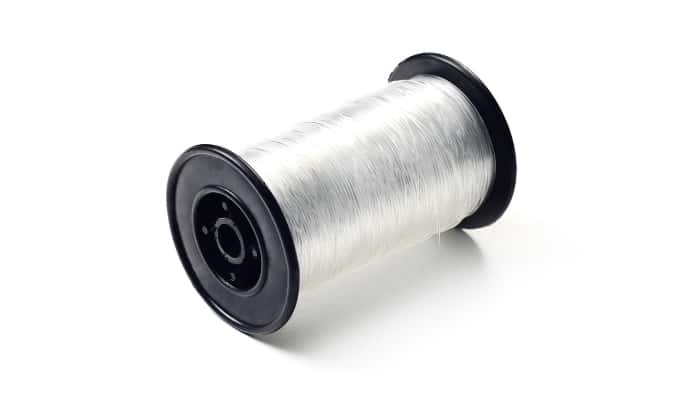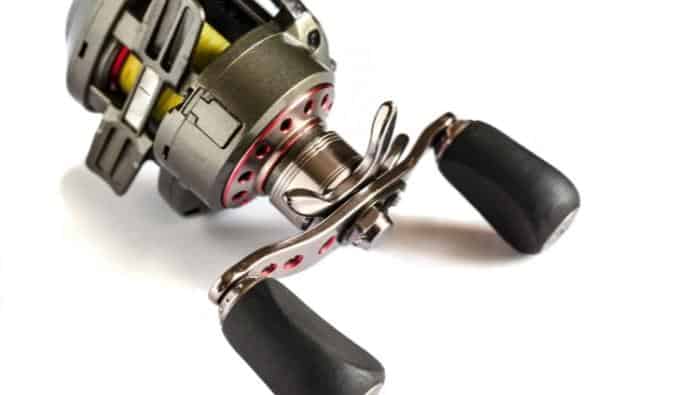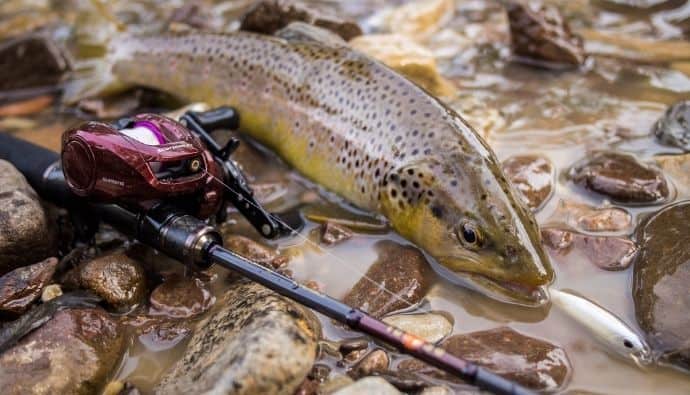Fish’s ability to see braided fishing line depends on several factors, including color, water clarity, and the species of fish. While some fish may be capable of discerning the line due to their sharp vision, others might not. The color of the braided line can be chosen to blend with the water conditions, which can reduce its visibility. In clear water, fish may see high-contrast lines more easily, while in murky water, the visibility of the line reduces significantly.
The type of fishing line we use and whether fish can see it, can make all the difference between a rewarding day with a full catch and a frustrating day of missed opportunities.
So, grab your fishing hat, and let’s dive into this aquatic mystery. We’ll explore the science behind fish vision and how different types of fishing lines, especially braided fishing line, play a role in our angling success.
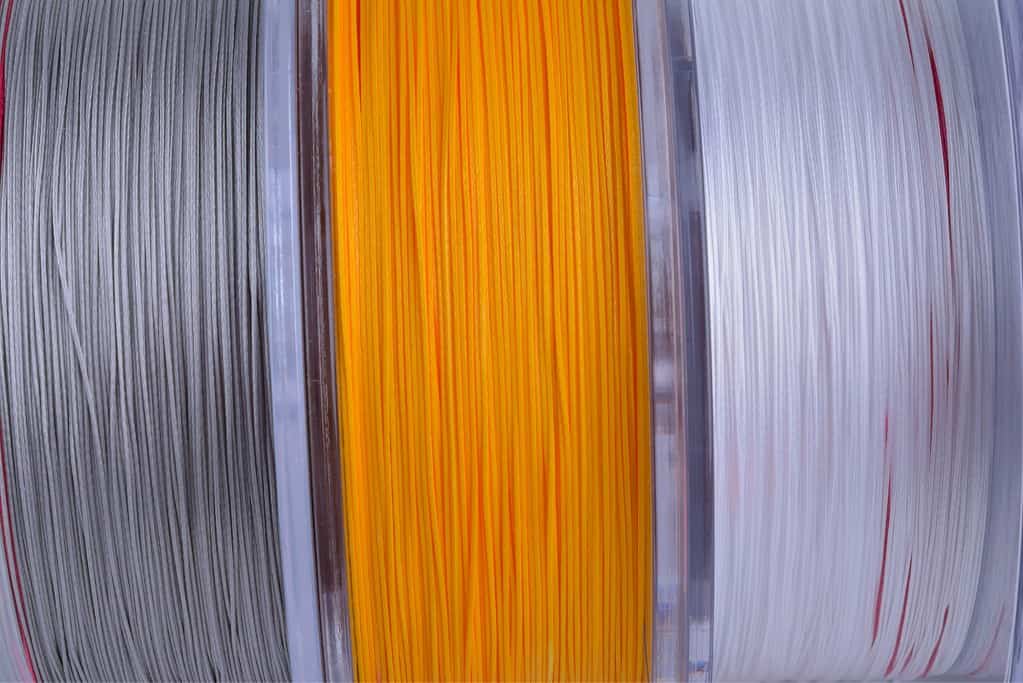
Understanding Fishing Lines: Mono, Fluoro, and Braided
Let’s think of fishing lines as if they were superheroes.
Each one has its own superpowers but also some weaknesses. There are three main types: monofilament, fluorocarbon, and braided lines. Let’s get to know them better.
Monofilament Fishing Line: The Flexible Friend
Imagine a superhero who is good at almost everything.
That’s the monofilament fishing line for you! It’s made from a single strand of material, usually nylon. It’s like the elastic band of lines because it can stretch a lot. This stretchiness can be a lifesaver when a fish makes a sudden move.
But what about its invisibility cloak? Well, it’s decent but not perfect. The monofilament fishing line is visible in clear water, especially the thicker ones. However, it tends to be less noticeable in darker or murkier water.
Fluorocarbon Fishing Line: The Invisible Warrior
Now, picture a superhero who can become almost invisible.
That’s the fluorocarbon line! It’s made from a compound called PVDF. Its magic power is its refractive index, which is almost the same as water. This means it’s harder for fish to see it, especially in clear water. Pretty neat, huh?
But remember, every superhero has a weakness. Fluorocarbon fishing line doesn’t stretch as much as the monofilament. So, it’s not as forgiving if a fish decides to make a quick dash.
Braided Fishing Line: The Strong Giant
Finally, imagine a superhero who is incredibly strong.
That’s our braided fishing line! It’s made by braiding together several strands of material. Its superpower is its strength. Even a thin braided line can hold up against big, strong fish. It also has almost zero stretch so that you can feel even the smallest nibble.
But can it hide from fish?
Unfortunately, braided fishing line is the most visible of all three types, especially in clear water. Its multiple strands and often darker color make it easier for fish to spot. But don’t worry. We have some strategies to tackle this!
Now that we know our superheroes let’s figure out how to use their superpowers to our advantage.
Can Fish See a Braided Fishing Line?
Okay, let’s get to the heart of the matter. Can fish really see braided fishing line?
The answer is it depends. It’s like trying to spot a piece of thread in your grandma’s knitting basket. It’s easier to see if the thread is bright red and the basket is empty. But if the thread is gray and the basket is full, it’s a different story. Let’s explore this further.
Factors Affecting Fish’s Visibility of Braided Fishing Line
Just like us, fish don’t see things the same way in every situation.
There are three main things that can change how well a fish can see braided fishing line: the color of the line, the clarity of the water, and the type of fish.
Fishing Line Color
Imagine you’re wearing a bright yellow hat in a crowd. You’d stick out, right?
The same goes for lines. Brightly colored braided fishing line can be more visible to fish. On the other hand, green or blue line that match the color of the water might be harder for fish to see.
Water Clarity and Light Levels
Now, think about trying to find that yellow hat in a dark room. It’s harder, isn’t it?
That’s how water clarity and light levels affect fish vision. A braided line is harder for fish to spot in murky water or low light. But in clear water or bright light, it’s easier.
Fish Species
Finally, not all fish have the same eyesight.
Some fish, like bass, have pretty good vision. They might be more likely to see your fishing line. Others, like catfish, rely more on their sense of smell and taste. They might not notice your fishing line as much.
Scientific Studies on Fish Vision and Perception of Fishing Lines
The science of fish vision is a fascinating field full of underwater goggles and tiny fish-sized TVs.
Several studies have found that fish can see certain colors better than others. For example, fish might see blue or green better because these colors match the water around them. This suggests that using a blue or green braided fishing line might make it harder for fish to see.
However, it’s important to remember that not all fish are the same.
Just like people, fish have their own peculiarities, with some species being more eagle-eyed than others when it comes to spotting fishing line. Therefore, tailoring your approach to suit the particular fish you’re pursuing is a clever move.
Remember, knowledge is power in the game of fishing, and understanding your target can make all the difference between a fish tale and a tall tale.
Implications for Anglers
Grasping the concept of braided fishing line visibility is akin to mastering the rulebook of an intricate board game.
Once you’ve cracked the code, you can turn the tide in your favor, making every cast a calculated and strategic move in the exciting game of angling. Let’s see how this knowledge can make you a better angler.
How Visibility of Braided Line Affects Fishing Techniques
The potential visibility of braided fishing line can affect your fishing strategy.
Picture yourself casting your line in crystal-clear water. Now, imagine the line being so conspicuous that the fish get spooked and dart away, leaving your bait untouched. In such scenarios, a little tweak in your game plan could be the key to success.
However, let’s not forget the superpowers of braided fishing lines.
They pack a punch with their superior strength and durability, making them ideal companions when you hunt for the aquatic world’s heavyweights. So, even if the braided line plays hide-and-seek with the fish, its strength could be your secret weapon when the battle with a big catch ensues. Sometimes, the benefits indeed outweigh the risks.
Tips for Using Braided Line Effectively
So, how can you make the most of your braided line? Here are a few tips:
- Choose the Right Color: Select a color that matches your fishing environment. Green or blue lines can blend well in clear water, while darker colors might work better in murky conditions.
- Use a Leader: If visibility is a concern, consider using a monofilament or fluorocarbon leader. This can help disguise your line near the bait.
- Feel the Bite: Take advantage of the low stretch of braided fishing lines. They’re great for detecting subtle bites, especially in deep water or heavy cover.
When to Use Braided Line vs. Mono or Fluoro
Choosing between braided, mono, or fluoro lines is like picking the right tool for the job. Each has its own strengths and weaknesses.
Use a braided line when you need strength and sensitivity. This makes it ideal for heavy cover fishing or when targeting larger species. But remember, its visibility can be a concern in clear water.
On the other hand, monofilament is a good all-around choice. It’s versatile and stretchy, making it forgiving during a fight. But it’s more visible in clear water than fluorocarbon.
Fluorocarbon is the least visible of the three, making it a great choice for clear water or wary fish. However, it’s less stretchy than mono, so you’ll feel more impact during a fight.
Conclusion
Fishing is a bit like a chess game.
You’ve got to think several moves ahead, anticipate your opponent’s strategy, and adapt as the game unfolds. In this case, our ‘game’ revolves around a simple question: can fish see a braided line?
We’ve learned that fish visibility of braided lines can depend on a variety of factors, from line color and water clarity to the species of fish you’re trying to catch.
But remember, visibility is just one piece of the puzzle. Braided fishing lines offer other benefits like strength and sensitivity, which can be a game-changer in certain fishing situations.
Understanding how fish perceive your line and choosing the right gear for your fishing conditions are key steps toward becoming a more successful angler. Keep learning, keep asking questions, and keep fishing.
Remember, the best fishing line is the one that helps you catch fish. So, don’t be afraid to try new things and find what works best for you. As they say, there are plenty of fish in the sea. So, gear up, get out there, and reel ’em in! Happy fishing!





 Facebook
Facebook YouTube
YouTube